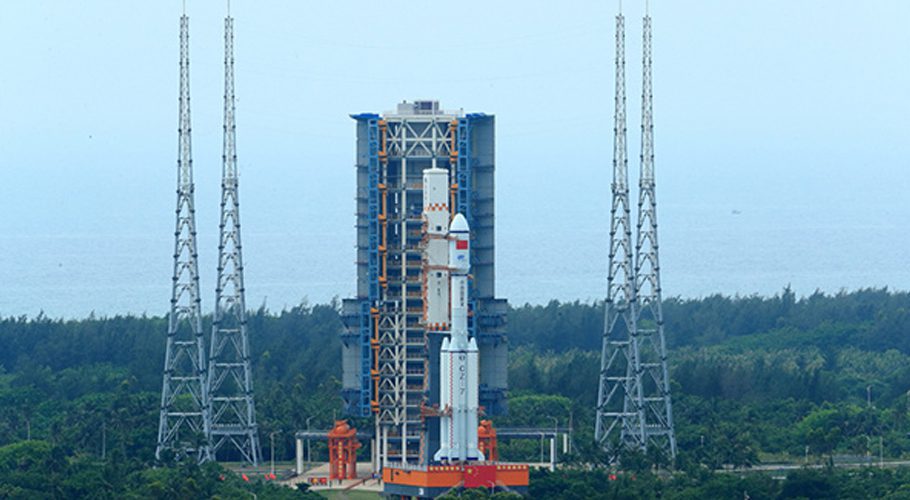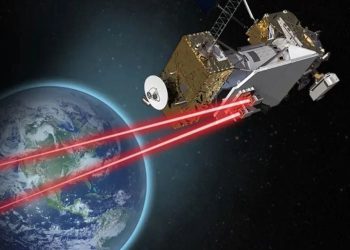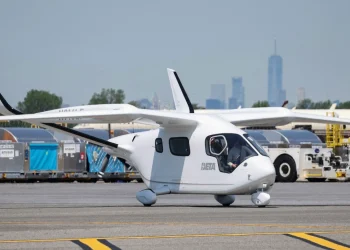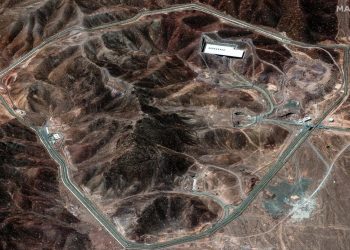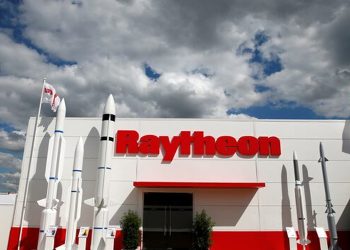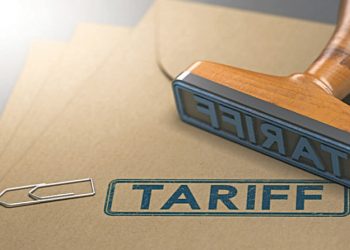BEIJING: The Tianzhou-4 cargo spacecraft and Long March-7 Y5 carrier rocket has been transferred to the launching area of the Wenchang Spacecraft Launch Site in the southern island province of Hainan.
The China Manned Space Agency (CMSA) said the Tianzhou-4 cargo spacecraft will be launched in the near future at an appropriate time. It was earlier expected to be launched on May 9, 2022.
The facilities and equipment at the launch site are in good condition, and various pre-launch function checks and joint tests will be carried out as planned.
The rocket is planned to launch the roughly 13.5-metric-ton Tianzhou-4 cargo vessel next month to China’s Tianhe space station core module.
Tianzhou-4 will deliver supplies and propellant for the Shenzhou-14 crewed mission, expected to launch from Jiuquan spaceport in the Gobi Desert in June.
The three-person Shenzhou-14 crew will be aboard the Tianhe space module for the arrival of two new modules, named Wentian and Mengtian, which will complete the three-module, T-shaped Chinese space station, later in the year.
READ MORE: SpaceX capsule brings four astronauts from 6-month mission
China deorbited the Tianzhou-2 spacecraft after using the cargo vessel for space station module transposition tests, making way for the new mission.
The subsequent launch of the Tianzhou-5 and Shenzhou-15 late in 2022 will see a first crew handover, with six astronauts aboard the Tiangong space station, and completion of the project’s 11-mission construction phase.
China plans to operate the Tiangong station for at least 10 years and has already announced plans to open the station to commercial activities and potentially tourist missions.
Tianhe is currently hosting the three Shenzhou-13 astronauts Zhai Zhigang, Wang Yaping and Ye Guangfu. The mission is China’s longest human spaceflight endeavor so far which, at 181 days in orbit, is nearly double the previous national record of 92 days set by the 2021 Shenzhou-12 mission.
The Shenzhou-13 mission has included a pair of extravehicular activities, conducted a range of experiments and hosted live science lectures for students back on Earth. The mission waas involved in a number of outreach and messaging events for domestic audiences, including an appearance in the flagship Lunar New Year live television show.
The astronauts also interacted with participants at an Embassy of the People’s Republic of China in the United States of America event on space exploration held April 9. Elon Musk contributed pre-recorded remarks to the event, saying he was looking forward to “humanity working together” in space.







